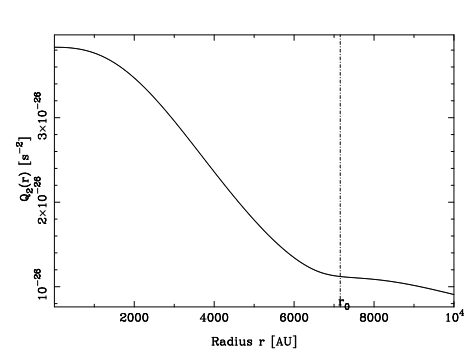The Puzzle Over Saturn’s Orbit (cont’d)
If modified theories of gravity are correct, we ought to see the effects in the orbit of Saturn. But nobody is quite sure whether we do or not.
Many astronomers think our universe is filled with mysterious dark stuff that exerts a gravitational pull on big things like galaxies. In fact, most galaxies spin so fast that they would fly apart unless there were a substantial amount of this dark gloop holding them together.
But if dark matter does fill our galaxy, we ought to see it in our Solar System. There’s no shortage of dark matter detectors looking for the stuff. Most have drawn a blank and those that do claim to have seen it have been ridiculed.
There is an alternative hypothesis, however. This is the idea that Newton’s equations of motion work in a different way at the very low accelerations that stars experience as they orbit a galaxy.
This story is only available to subscribers.
Don’t settle for half the story.
Get paywall-free access to technology news for the here and now.
Subscribe now
Already a subscriber?
Sign in
You’ve read all your free stories.
MIT Technology Review provides an
intelligent and independent filter for the
flood of information about technology.
Subscribe now
Already a subscriber?
Sign in
The equations that describe this so-called Modified Newtonian Dynamics or MOND are non-linear and so lead to other predictions. “An important consequence of the non-linearity is that the gravitational dynamics of a system is influenced by the external gravitational environment in which the system is embedded,” say Luc Blanchet at the Universite Pierre et Marie Curie and Jerome Novak at the Universite Denis Diderot, both in Paris.
This is called the external field effect and it ought to have a measurable influence on the Solar System, particularly on the precession of the perihelion of the planets.
Today, Blanchet and Novak calculate the size of this effect and compare it to the best data we have of planetary motion.
It turns out that the planets most effected are the distant gas giants: Saturn, Uranus and Neptune. And the best monitored of these is Saturn, since astronomers have been able to follow the motion of the Cassini spacecraft as it orbits the ringed giant.
Blanchet and Novak say that the accuracy of these measurements can be used to rule out some formulations of MOND. “We find that the precession effect is rather large for outer gaseous planets, and in the case of Saturn is comparable to, and in some cases marginally excluded by published residuals of precession permitted by the best planetary ephemerides.”
But the story doesn’t end there. One of the best sets of data about Saturn’s motion has been compiled by the Russian astronomer Elena Pitjeva, who heads the Laboratory of Ephemeris Astronomy at the Institute of Applied Astronomy in St Petersburg.
In 2005, she published a comprehensive set of data on Saturn’s motion. It’s this that Blanchet and Novak used to compare their calculations against.
But back in 2008, rumours began to circulate that Pitjeva had found something strange in more recent data. These were outlined in a paper by Lorenzo Iorio at the National Institute of Nuclear Physics in Italy and covered by the Physics arXiv Blog at the time.
The bottom line was that Pitjeva had reportedly discovered that the precession of Saturn’s perihelion, as predicted by general relativity, needed to be corrected to fit the most recent data from Cassini.
Pitjeva doesn’t appear to have published these data, even now almost three years later. And Iorio hasn’t updated his paper either.
But it raises an intriguing question. Could the data from Cassini be telling us something interesting about MOND?
Perhaps Blanchet and Novak could politely enquire about the status of Pitjeva’s result and compare it with their calculations. Just to settle the matter for curious souls.
Ref: arxiv.org/abs/1105.5815: Testing MOND in the Solar System
